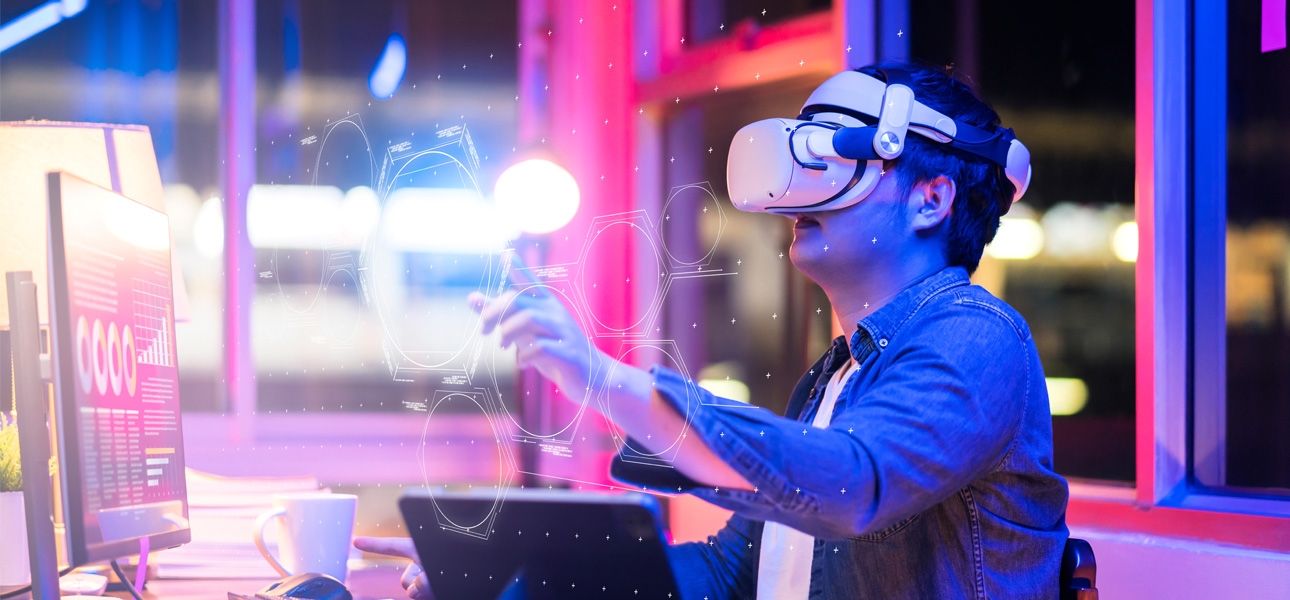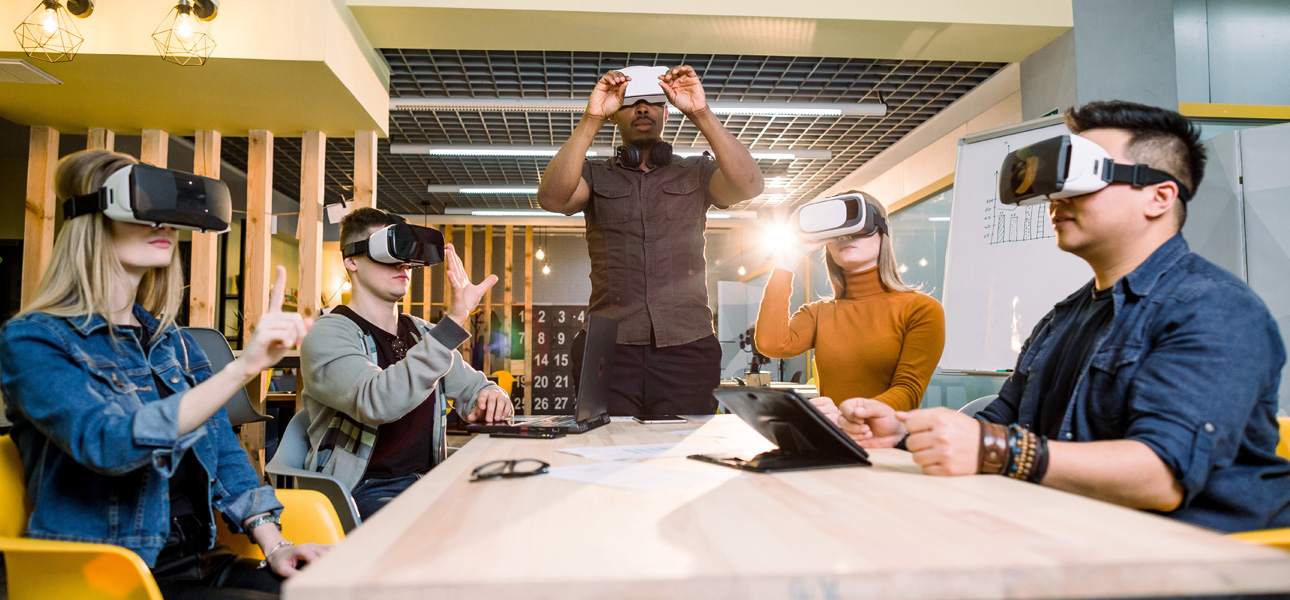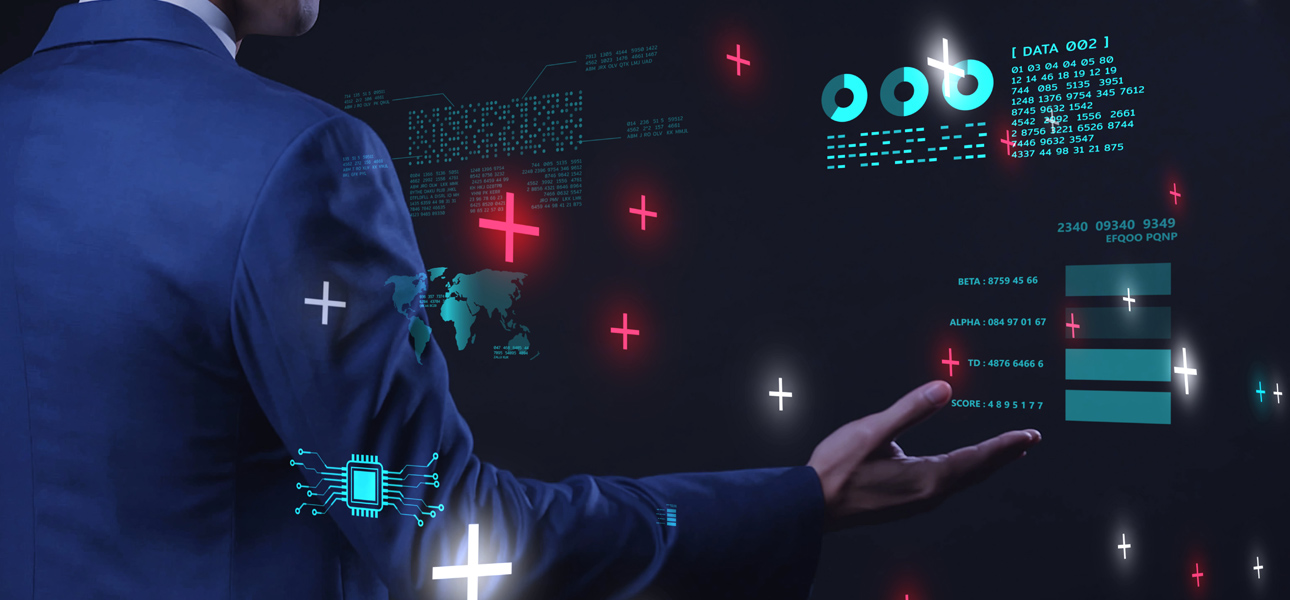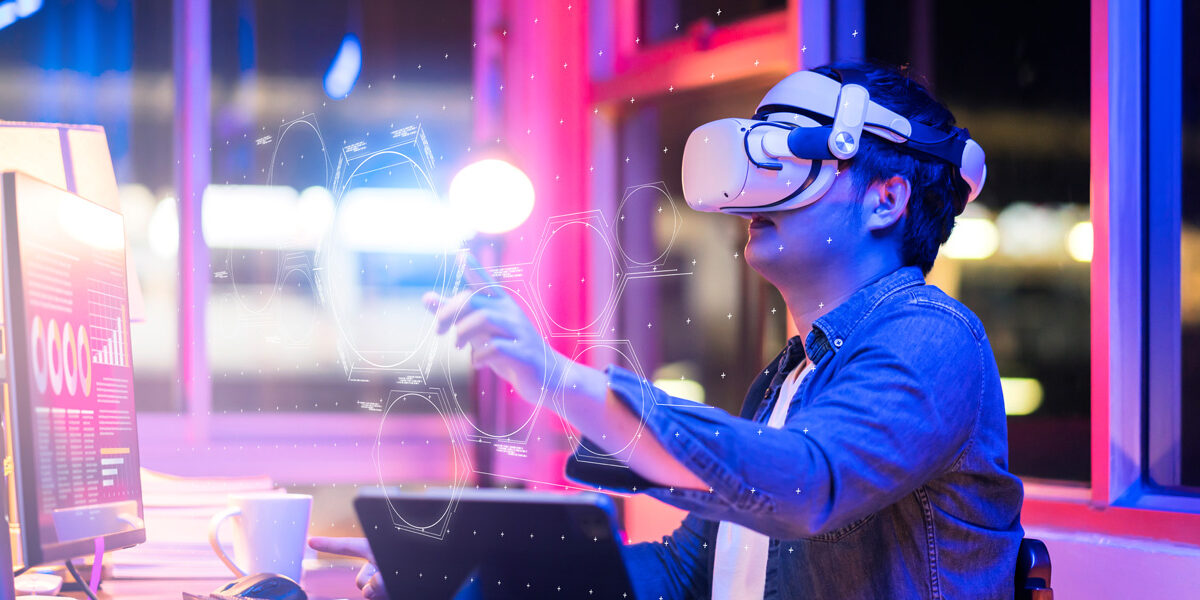
Augmented Reality (AR) and Virtual Reality (VR) are no longer just for gaming and entertainment—these immersive technologies have become powerful marketing tools for brands looking to stand out in a crowded digital landscape. By blending virtual elements with real-world environments, AR enhances how users perceive products and information. VR, on the other hand, offers fully immersive, simulated experiences that can transport customers anywhere—from a virtual store to an exotic travel destination.
In this article, we’ll explore the basics of AR/VR marketing, highlight real-world use cases, and discuss best practices for implementing these technologies. Whether you’re a small startup or a global enterprise, AR and VR can help create memorable brand experiences that drive engagement, loyalty, and sales.
1. AR vs. VR: Understanding the Difference
Augmented Reality (AR)
AR overlays digital information (images, animations, text) onto the real world, typically viewed through a smartphone, tablet, or smart glasses. Examples include Snapchat filters, Instagram face filters, and mobile apps that place virtual furniture in your living room.
Key Traits
- Accessibility: Consumers can use existing devices like smartphones; no specialized hardware is required.
- Real-World Integration: Maintains a view of the real environment while adding virtual elements.
- Immediate Utility: Customers can visualize products in real-time or interact with brand elements in their actual surroundings.
Virtual Reality (VR)
VR immerses users in a completely virtual environment. They typically wear headsets like the Meta Quest, HTC Vive, or PlayStation VR to experience 360° content, simulated worlds, or interactive virtual spaces.
Key Traits
- High Immersion: Users feel “transported” to another space, making VR excellent for storytelling and experiential marketing.
- Specialized Hardware: Requires VR headsets and sometimes additional sensors or controllers.
- Potentially Steeper Learning Curve: Users may need time to adapt to VR controls and movement.

2. Why AR/VR Marketing Matters
Enhanced Engagement
AR and VR experiences are interactive and visually striking. By engaging multiple senses, these technologies capture—and keep—audiences’ attention better than traditional media.
Emotional Connection
Immersive experiences often evoke stronger emotions, whether excitement, curiosity, or awe. This heightened emotional response can lead to stronger brand recall and loyalty.
Personalized Interactions
AR and VR allow for personalized content, such as trying on a virtual watch or customizing a car. When customers can see themselves using a product in a realistic or simulated environment, they’re more likely to convert.
Competitive Differentiation
Brands that adopt AR/VR marketing early can stand out in a sea of online content. The novelty factor alone can generate buzz, user-generated content, and organic social sharing.
For more insights on emerging marketing tech, check out AI Tools Every Modern Marketer Should Know. While not directly about AR/VR, these AI platforms often integrate well with immersive technologies.
3. Real-World Use Cases
3.1 Product Visualization
- IKEA Place App (AR): Allows shoppers to see how furniture fits in their home.
- Sephora Virtual Artist (AR): Users virtually try on makeup shades before purchasing.
3.2 Virtual Showrooms and Tours
- Automotive: VR experiences let potential buyers explore a car’s interior and features in a virtual showroom.
- Real Estate: Prospective homebuyers can “walk” through properties remotely via 360° VR tours.
3.3 Interactive Brand Campaigns
- Snapchat and Instagram Filters (AR): Branded face filters and world lenses let users engage playfully with a company’s logo, product, or themed content.
- Event Activations (VR): Companies at conferences or trade shows set up VR booths, immersing attendees in a branded experience.
3.4 Training and Education
- Employee Onboarding: VR modules simulate work environments or machinery operation without physical risks.
- Customer Tutorials: Brands create VR or AR lessons, teaching customers to use products effectively.
4. Getting Started with AR/VR Marketing
4.1 Define Clear Objectives
Are you aiming for increased sales, brand awareness, or customer education? Clarifying your goals ensures the final AR/VR experience aligns with your broader marketing strategy.
4.2 Determine Platform and Hardware
- Mobile AR (iOS/Android): Best for broad reach due to widespread smartphone usage.
- WebAR: Allows AR experiences directly in web browsers, simplifying user access.
- VR Headsets: High-end experiences but smaller user base—often used at events or specialized marketing activations.
4.3 Concept and Storyboarding
Just like a video campaign, AR/VR projects benefit from detailed planning. Sketch out the user journey, interactive elements, and visual design. Consider how users will navigate your immersive experience and what key messages you want them to take away.
4.4 Development and Testing
Depending on complexity, you may partner with specialized AR/VR agencies or develop in-house using platforms like Unity, Unreal Engine, or WebXR frameworks. Rigorous testing is crucial—glitches or poor user experience can undermine the entire campaign.
If you’re focused on interactive storytelling, you might also find value in Generating High-Impact Content with AI: Tips, Tools, and Best Practices. While AI and AR/VR are distinct, AI can assist in creating visuals or scenarios more efficiently.

5. Best Practices for AR/VR Marketing Success
5.1 Keep It User-Friendly
If your experience requires too many steps or specialized hardware, people may drop off. Offer clear instructions and minimize technical hurdles whenever possible.
5.2 Offer Genuine Value
AR/VR should solve a problem or enhance user enjoyment, not just be a gimmick. For instance, letting shoppers virtually try on products cuts down on returns and increases purchase confidence.
5.3 Mind the Time and Space
In VR, a user might spend 10+ minutes exploring. In AR, they might only interact for a few seconds. Craft the experience to fit the expected engagement window and environment.
5.4 Focus on Mobile Compatibility
Even if you’re creating a high-end VR campaign, consider offering a simplified AR experience for mobile. This broader reach ensures you’re not limiting potential users to those with VR headsets.
5.5 Integrate with Other Campaigns
AR/VR doesn’t exist in a vacuum. Cross-promote experiences on social media, email newsletters, and paid ads. Encourage users to share their AR selfies or VR screenshots, building organic buzz.
6. Measuring Impact
Engagement Metrics
Track session duration, number of interactions (e.g., clicks, taps, gestures), and repeat usage. These metrics reveal whether your experience captivates users or needs improvement.
Conversion and Sales
Use unique URLs, QR codes, or in-app links to measure how many AR/VR users proceed to make a purchase or request more information.
Social Sharing
If your AR/VR experience allows in-app capture, encourage users to post screenshots or videos on social platforms. Track branded hashtags or mentions to gauge viral lift.
Feedback and Reviews
Prompt users to rate or share feedback after their AR/VR session. This data can guide future updates or expansions.
Looking to integrate these insights into a broader digital strategy? How AI Is Revolutionizing Digital Marketing can help you understand where AR/VR fits in the evolving martech landscape.

7. Real-World Examples
IKEA Place (AR)
IKEA’s AR app lets shoppers virtually place furniture in their own homes, reducing uncertainty about size and style. This convenient tool has contributed to higher online conversion rates and fewer returns.
Marriott VR Postcards
Marriott introduced “VRoom Service” in select hotels, letting guests borrow VR headsets to explore travel destinations. This immersive content sparks wanderlust and promotes Marriott’s various properties.
Nike’s AR “Try-On” Sneakers
Using AR, Nike customers can see how a pair of shoes looks on their feet without physically trying them on, streamlining the online shopping process and boosting buyer confidence.
Conclusion
AR and VR open up a new realm of possibilities for marketers and business owners who want to create memorable, engaging experiences. By layering virtual elements onto real environments or transporting users to entirely digital worlds, these technologies can boost brand loyalty, increase conversions, and set you apart in a competitive market. As with any cutting-edge innovation, success relies on thorough planning, user-centric design, and a focus on genuine value rather than novelty.





